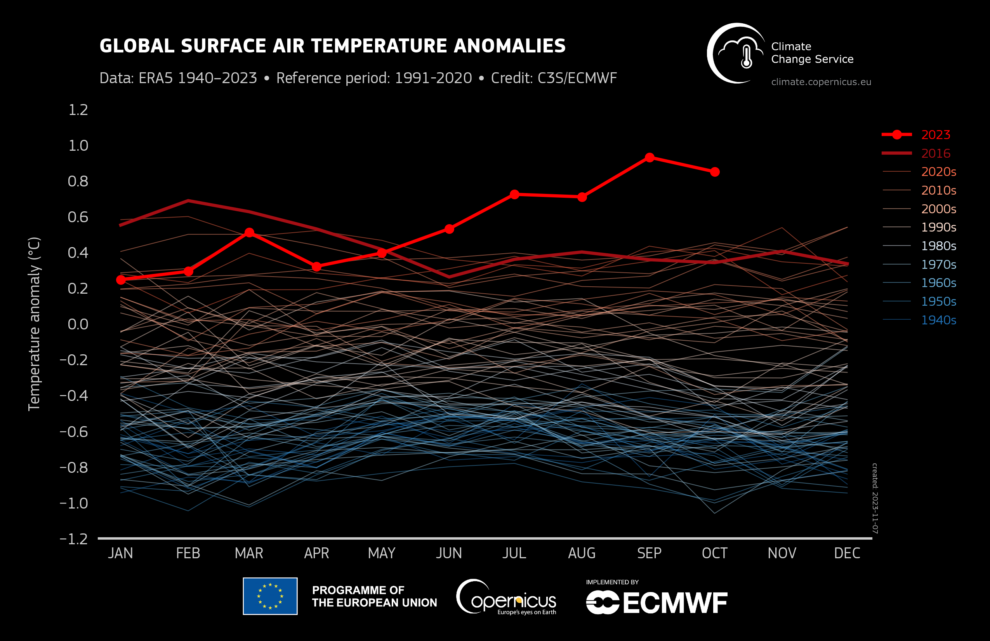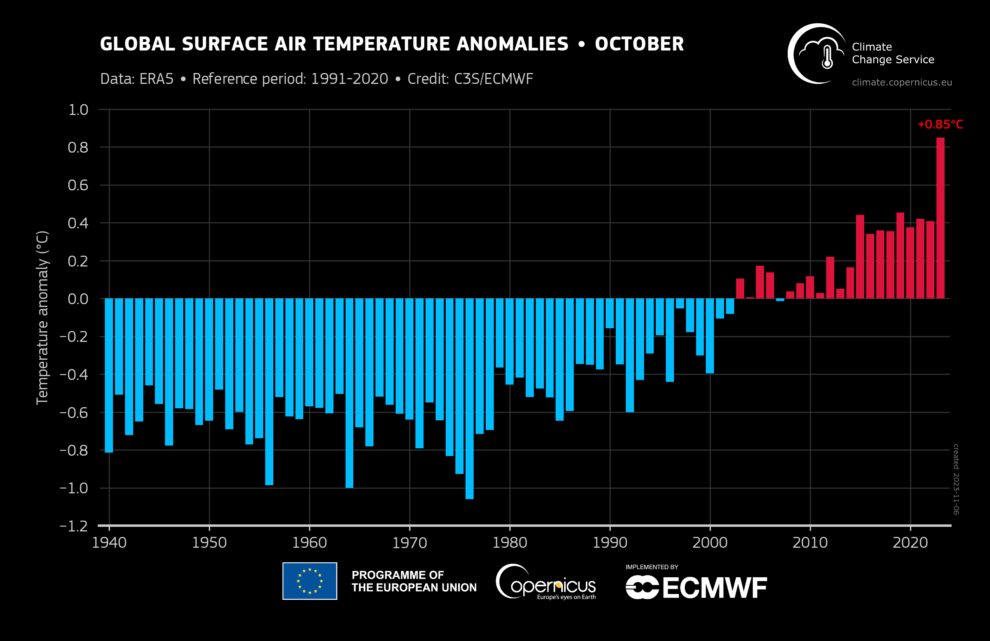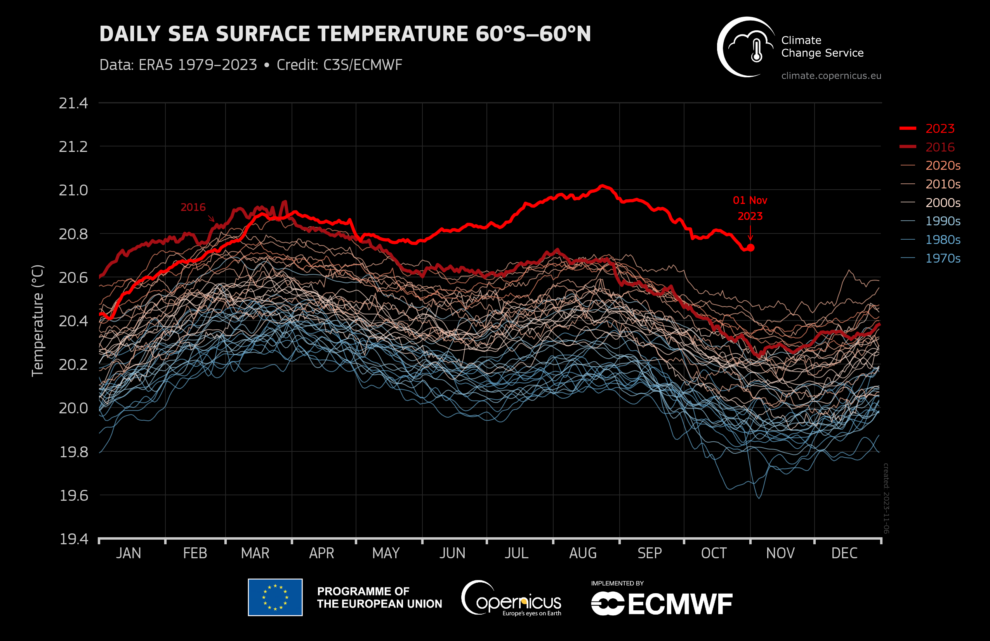

Several people on the beach during the suspension of activities due to the heat, October 11, 2023, Las Palmas de Gran Canaria.
With almost two months left until the end of the year, the EU Climate Change Service Copernicus (C3S) believes there is no need to wait any longer. 2023 will “definitely” be the warmest year on record. The temperature anomalies observed during the first ten months have been so exaggerated that nothing seems to be able to prevent them.
“Exceptional temperature anomalies were recorded in October 2023, after four months during which world temperature records were broken. We can say with almost complete certainty that 2023 will be the warmest year on record, and that Temperatures are currently 1.43°C above pre-industrial average levels.. The sense of urgency for ambitious climate action in the lead-up to COP28 has never been greater,” said Samantha Burgess, Deputy Director of the Copernicus Climate Change Service (C3S).

June, July, August, September and October 2023 were, according to C3S, warmest months ever recorded respectively. And May became the second warmest in its series. So this trend seemed to indicate that this year would go down in history. But if the forecasts are finally confirmed, the concern will be the large margin by which 2023 will break records. So extensive that two months before its end it is practically a given.
It should be remembered that C3S is a service launched by the European Center for Medium-Range Weather Forecasts on behalf of the European Commission and with financial support from the EU. And this has become a real standard. It publishes monthly climate bulletins reporting on the state of the planet. And for this they use billions of measurements from satellites, ships, aircraft and weather stations all over the world.
Climate records for October
Copernicus’ warning for 2023 was accompanied by the publication of October climate data confirming an anomaly in average surface air temperatures. This was 0.85°C above the previous warmest October 2019.
“The month as a whole was 1.7°C warmer than the average October temperature for 1850-1900., designated pre-industrial base period. For the current calendar year, January to October, global average temperatures in 2023 are the highest on record: 1.43°C above the 1850-1900 pre-industrial average and 0.10°C above the 2016 decade average year, which is now the warmest calendar year on record,” C3S reports.

Additionally, last month the average sea surface temperature above 60°S-60°N was 20.79°C. the highest was recorded in October. But while El Niño conditions continued to develop in the equatorial Pacific, anomalies remain below those reached at the same time of year during the development of the historically strong events of 1997 and 2015, according to Copernicus.
October was also Antarctic sea ice extent remains at record low for sixth month in a row for the time of year, with the monthly value 11% below average. And in turn, Arctic sea ice extent reached its seventh lowest level in October, 12% below average.

Against, Most parts of Europe received above average rainfall. Although this can be explained by the storms “Babet” and “Alin”, which affected the north of the continent and Spain and Portugal, respectively, with heavy rainfall.
However, C3S found that October was also wetter than normal in more regions of the planet. such as southwestern North America, parts of the Arabian Peninsula, regions of Central Asia and Siberia, southeastern China, Brazil, New Zealand and regions of southern Africa. The reason could be the impact of various cyclones.
However, a month the southern US and parts of Mexico were drier than average.both affected by drought, as well as regions of Central and Far East Asia and much of the extratropical southern hemisphere, including Australia.
Source: El Independiente